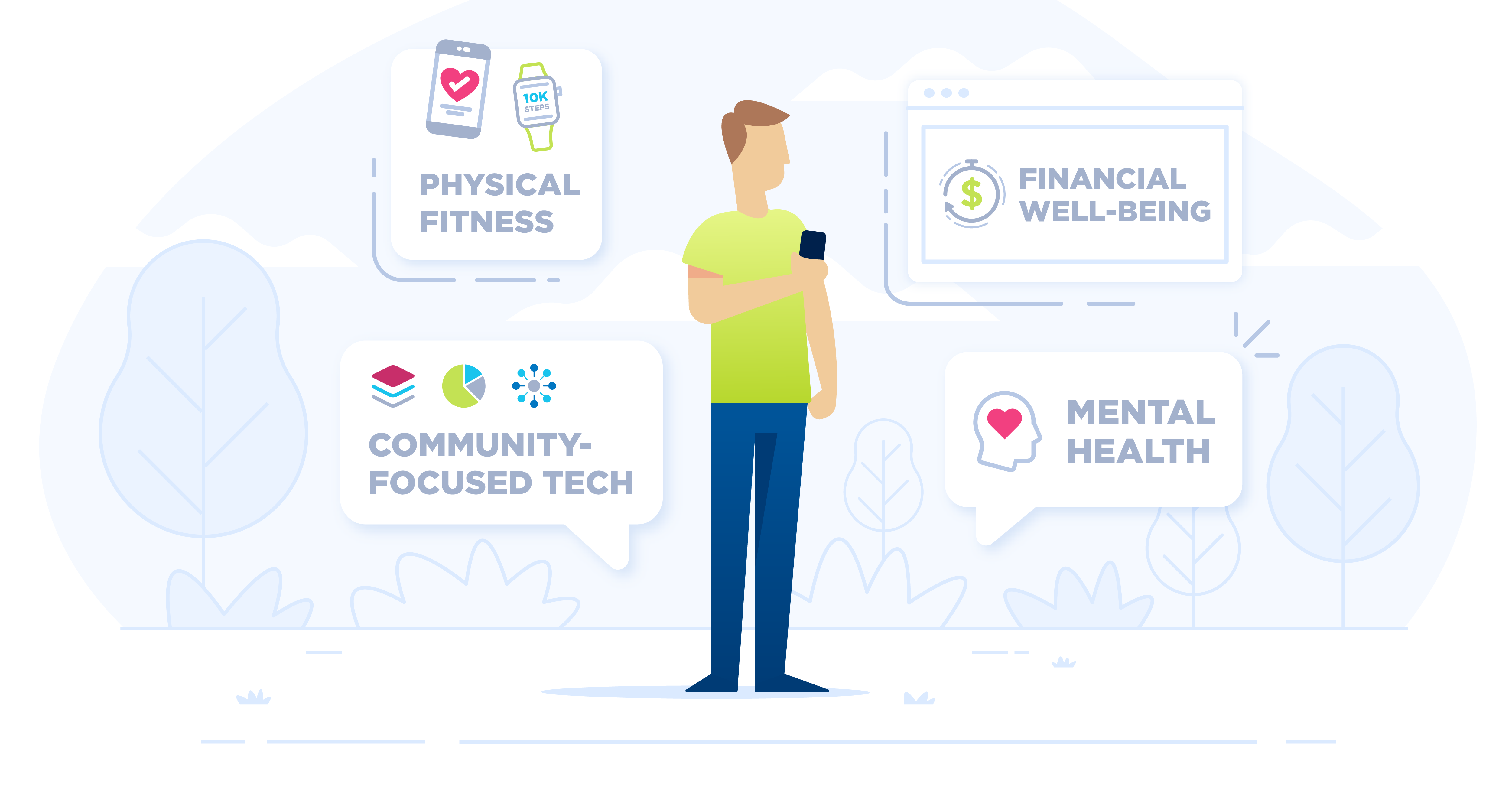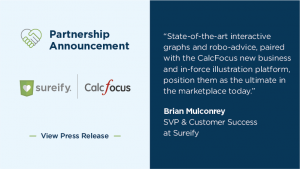The capacity for life insurers to engage with their customers has grown well beyond wearable technology in recent years. AI-enhanced capabilities for retrieving and using data to create a personalized experience for each individual customer, along with more channels to access that data – and use it to communicate – has changed the landscape entirely.
That’s why a well-thought-out engagement strategy that continually strengthens each client relationship has never been more important. The business of life insurance is modeled around a personalized experience, delivered formerly by the familiar face of a local agent. Since we live in a more remote-enabled world in which people are infinitely busier, the friendly neighborhood agent model must be enhanced – especially as we work toward providing the ultimate customer-centric experience. But because the product, in this case, is highly emotional and fraught with complexities, personal interactions are just as important as the business side of the industry and must be part of the engagement strategy.
Additionally, engagement has to offer value beyond products and services. In a recent study called Insurance Reinvented: Value-Added Services, Capgemini says, “Insurers have started offering customers a range of innovative, value-added services related to their health, lifestyle, or property management. As these services require more regular interaction with customers and a more positive context for engagement, they give a great boost to the brand that the insurers build with customers. Insurers are now positioning themselves as risk managers and partners in customers’ daily lives, and – in the process – are also gaining a deeper understanding of their customers, which can help them provide better services.”
Two things pop into my head as I read this statement:
- More and more insurers are coming to the realization that value means different things to different people.
- All policyholders must perceive value if you want them to engage.
Insurers today are drawn toward building a health incentive model – that is, they hope to use wearables and devices to connect with and reward customers. Making individuals feel good about their achievements is a great way to build incentives that encourage the kinds of healthy behaviors that make people good candidates for cross-sells and up-sells.
But is focusing on health-related engagement through wearable technology enough? Does this kind of interaction reach every policyholder on some level? And does it offer value to all policyholders?
From my vantage point, the answer is no. I say this because I know how much more can be brought into an engagement strategy. The data gathered through insurtech platforms like Sureify’s LifetimeENGAGE can be analyzed and processed to help build a connection with each customer individually – hence, the personalization of engagement. Forbes magazine says, “Leading omnichannel retailers are successfully using AI and machine learning today to personalize customer experiences to the persona level. They’re combining brand, event and product preferences, location data, content viewed, transaction histories, and most of all, channel and communication preferences to create precise personas of each of their key customer segments.”
New digital and tech capabilities are being added to the mix every day – capabilities that offer new, individualized ways to help policyholders live better lives across the spectrum. This speaks to the value that insurers’ engagement strategies can bring to the table. Here are three ideas that have crossed Sureify’s radar recently that can offer an experience for customers far beyond the “wearables and quizzes” model:
1. Tech possibilities for digital mental-health diagnosis and treatment
Insurers and their customers have come to recognize that mental well-being is every bit as important as physical well-being. In fact, the two are inextricably linked. Fortunately, there are some new platforms that are helping insurers address mental health issues, and they’re proving to be an effective guide toward successful engagement – and as a bonus, they are a benefit to insurers’ business models.
A 2019 report in nature.com says that, “More than 42% of people surveyed by the US Census Bureau in December reported symptoms of anxiety or depression …, an increase from 11% the previous year.“
If AI-enhanced capabilities designed to identify traits of anxiety and depression were available to policyholders – as they are in patient-steered digital health therapy platforms – it could be a game-changer for those most affected, allowing them to learn techniques and exercises that could improve their mental well-being.
Apps and platforms like Quartet are making it possible for individuals to access diagnostic and care possibilities. Harvard Business Review finds these kinds of apps beneficial, reporting: “Non-clinician based digital mental health services, such as chatbots, video, and written content, gamified user exercises and digital cognitive behavioral therapy (CBT) programs, are a good adjunct to clinician-based virtual care.”
Beyond just their availability, research is showing that these digital interventions work. A study by SilverCloud Health, with the School of Psychology at Trinity College, the University of Dublin, and health economics analysis from the University of Sheffield found that “Psychiatric interviews of participants at three months after treatment found that, overall, 56.4% no longer had a diagnosis of anxiety, depression or a joint diagnosis. A further significant decrease in symptom scores was seen after 12 months, on average a 50% decrease.”
It’s worth noting that “friction”, by its nature, causes distress. Thanks to the digitization of the retail and service industries, we all have an expectation of ease of use. From a recent LIMRA report: “Confusing information and cumbersome processes cause customers to drop out of the sales funnel (a fact that drove Amazon to pioneer “one-click” ordering some 20 years ago). That’s undoubtedly true of life insurance, especially at a time when there are all sorts of other concerns competing for Americans’ attention — including working remotely and the associated challenges of family care amid office and school closings. It wouldn’t take much these days for a life insurance prospect to abandon the process entirely.” Insurers who decide to bring mental well-being into an engagement strategy should be extra careful to ensure that all interactions are completely frictionless and available through all channels at any time.
Cognitive health, another aspect of mental well-being, can also be addressed through digital engagement – especially among (slightly) older policyholders. Nearly half of all respondents to a University of Michigan National Poll on Healthy Aging were concerned about memory loss, but “very few of them have talked with their doctors about evidence-based ways to prevent memory loss.”
That’s where new platforms like Neurotrack come into play. This innovative company focuses on “three pillars of brain health” – assess, monitor, and strengthen – to go beyond simplistic diagnostic capabilities. Using eye-tracking technology available on a mobile device, Neurotrack allows users to establish a baseline and then strengthen the brain’s functioning.
Adding a mental health and well-being component to an engagement strategy through these new digital technologies is beneficial to both customers (empowering them through self-diagnosis and capabilities for improvement) and insurers (reducing risk and improving underwriting and claims processing).
2. New tools to encourage financial well-being
Financial well-being is as critical as good health to a productive life. Yet, many Americans are finding it more difficult to manage finances in a way that allows them to live comfortably today with the expectation of a comfortable tomorrow. That’s why life insurance and annuities are important. But in truth, these products only make up a small portion of a comprehensive financial plan.
From a J.D. Power Insight Report: “The bottom line is that 56% of American consumers are not fully financially healthy, citing varying degrees of financial stress and vulnerability that range from struggles with credit and with building a savings reserve to severe difficulties paying their daily bills.” The report also finds that 44% of respondents have growing stress about their financial situations – not surprising considering that 38% report their household income has declined by 25% since the pandemic began.
This growing focus on the need for better personal financial strategies leads us to a perfect opportunity for increased value through engagement-focused technology that goes far beyond the traditional “needs analysis” calculator. And many in our industry are answering the call. Boston Consulting Group looked at the expansion toward financial wellness by insurers, finding that, “The biggest expansion to date has been in financial wellness – an emerging area of insurance that includes financial counseling, financial literacy tools, and retirement planning.”
Since people are living longer, the value an insurer can offer is in helping policyholders identify ways to maximize their financial comfort. The regulation for such engagement may seem daunting, but there is a broad opportunity to offer self-introspection that can ultimately guide policyholders toward better financial fitness. Here are some questions to begin value-added financial engagement:
- Are you saving enough for your lifetime?
- Should you be saving more?
- How much more?
- Could annuities make a difference?
- How about long-term care riders?
Of course, beyond questionnaires asking “where are you today?” and “where do you hope to be tomorrow?” is digitally offered content that informs and educates. A recent Novarica article says: “Wealth management firms and retail banks have a head start in this space, sell products that occupy more of the financial wellness spectrum, and have already deployed many … technologies. But by investing in and mustering these technologies, insurers can promote their own programs and products, and start to take their own share of the market around financial wellness.”
The value in the digital tools available today lies in giving the power of analysis and forecasting to the individual. With sophisticated software that is easy to use and gamified, these new tools – and the companies that are offering them – are redefining financial planning, and putting it into the hands of policyholders.
It goes without saying that every engagement related to financial wellness must be paired with an offer to interact with a human being. That is the greatest value of life insurance – the ever-present opportunity to connect with someone who can walk you through any bump in the road.
3. Data-driven tools that can strengthen specific communities
If you know anyone with diabetes, you probably know a little about the amount of work it takes to live a healthy lifestyle. The acknowledgment of the disease and willingness to be ever-flexible with exercise regimens, food intake, medications, and new technology (like insulin pumps and continuous glucose monitors) are all critical parts of maintaining health. Those who commit to doing whatever it takes to stay healthy have much better outcomes; those who don’t are likely to undergo significant health challenges.
In the community of diabetes management, there are countless support groups, forums, and other places to get up-to-date information. It’s a strong community, made stronger by digital and technological enhancement. As an example, Glooko is an app that is provided, free of charge, to anyone diagnosed with diabetes. It exists as a collaborative, allowing diabetics to sync information about blood glucose to a mobile device, thus identifying trends and allowing for adjustments. It allows for direct sharing of medical information with medical professionals. And it creates a digital neighborhood of people living with the disease and caregivers, providing information, communication, and affiliation.
That kind of community-building works. Glooko.com reports that blood glucose levels for those who participate decrease by almost 20% after one year of using the app. Overall health levels for app users improve as well.
Of course, diabetes is just one situation in which digitally-enhanced tech can be used to provide value beyond a wearable device. Other diseases like MS, cancer, hypertension, and obesity offer the opportunity for community-building, which leads to better outcomes.
Insurers today should be engaging with digital communities. Beyond disease management, wouldn’t it be nice to receive valuable coupons and information, along with inspirational thoughts and messages, shortly after welcoming a new baby? Or receiving a notification on your 65th birthday that shares how most local YMCAs offer free memberships to older Americans? There are countless opportunities to bring specific personas into a larger community, while interacting with them in a way that is incredibly personal and valuable – again, the two most important parts of any true engagement. Insurers should be inspired by new tools like Google’s Alexa app and Apple’s Siri, KardiaMobile, and yes, Glooko – in other words, new Internet of Things (IoT) possibilities that deliver personalized, valuable engagement while connecting people to each other for the benefit of all.
It’s pretty clear that, in 2022, engagement should go far beyond just wearing a FitBit or Apple Watch as an incentive for good health. With the data and technology advancements available today, the possibilities for personalizing interactions and offering real guidance to each individual policyholder are almost infinite. These new digital advancements will be the areas that allow insurers to truly have an impact on their customers – and, because they will reduce mortality rates, they will ultimately have an impact on insurers’ business models and bottom lines.





